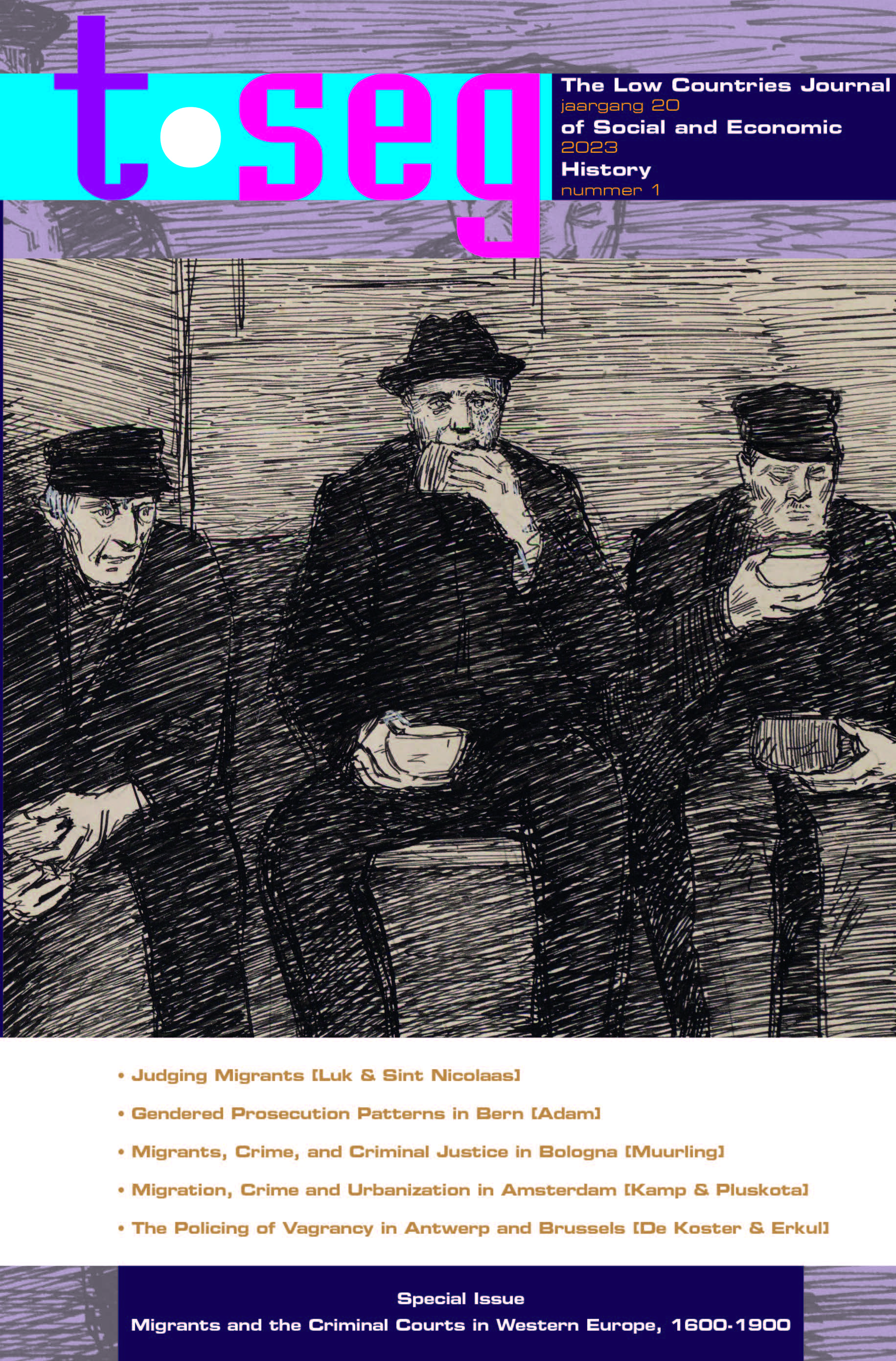Keeping Order - Theft, Sex, and Vagrancy
Gendered Prosecution Patterns in Seventeenth-Century Bern
DOI:
https://doi.org/10.52024/tseg.13641Abstract
In recent decades, historians working on crime and gender have been focusing on the interplay between female crime and the urban setting. Subsequently, migration has become increasingly important within the research field. While this has led to new findings regarding women’s participation in crime in early modern metropolises, in contrast, little is known about prosecuting patterns in smaller urban centres in predominantly rural regions. This is particularly true for less urbanized territories, such as the geographical area of the Swiss Confederation. It is often assumed that women in big cities led more mobile and independent lives than their counterparts in smaller towns. This socio-economic difference in female profiles is used as the main explanation for the disparities in gendered patterns in the registration of criminality. By analysing the records of the criminal court of seventeenth-century Protestant Bern, this article aims to contribute to the understanding of women’s crime in early modern urban territories. The findings demonstrate that smaller towns could also show high levels of female defendants. However, the city of Bern was not a place of relative freedom for women. Rather, the opposite is true: the authorities’ control, focusing on an ordered society and household, led to strong formal control of mobility and (im)morality, which had a lasting impact on the prosecution of women. This policy, the article argues, is the main explanation for the high percentage of recorded female delinquency.
Downloads
Published
Issue
Section
License
Copyright (c) 2023 Tina Adam

This work is licensed under a Creative Commons Attribution 4.0 International License.






